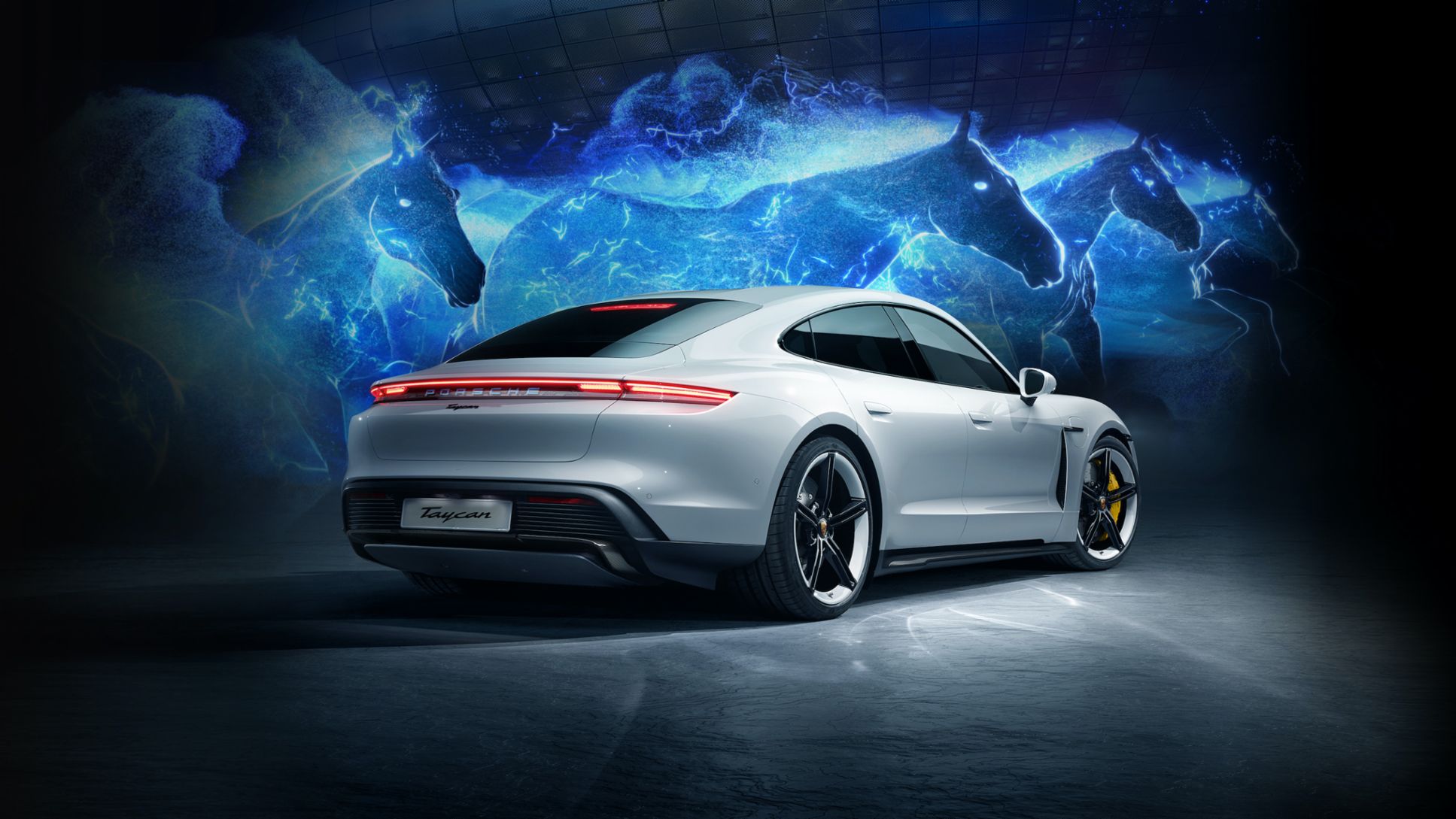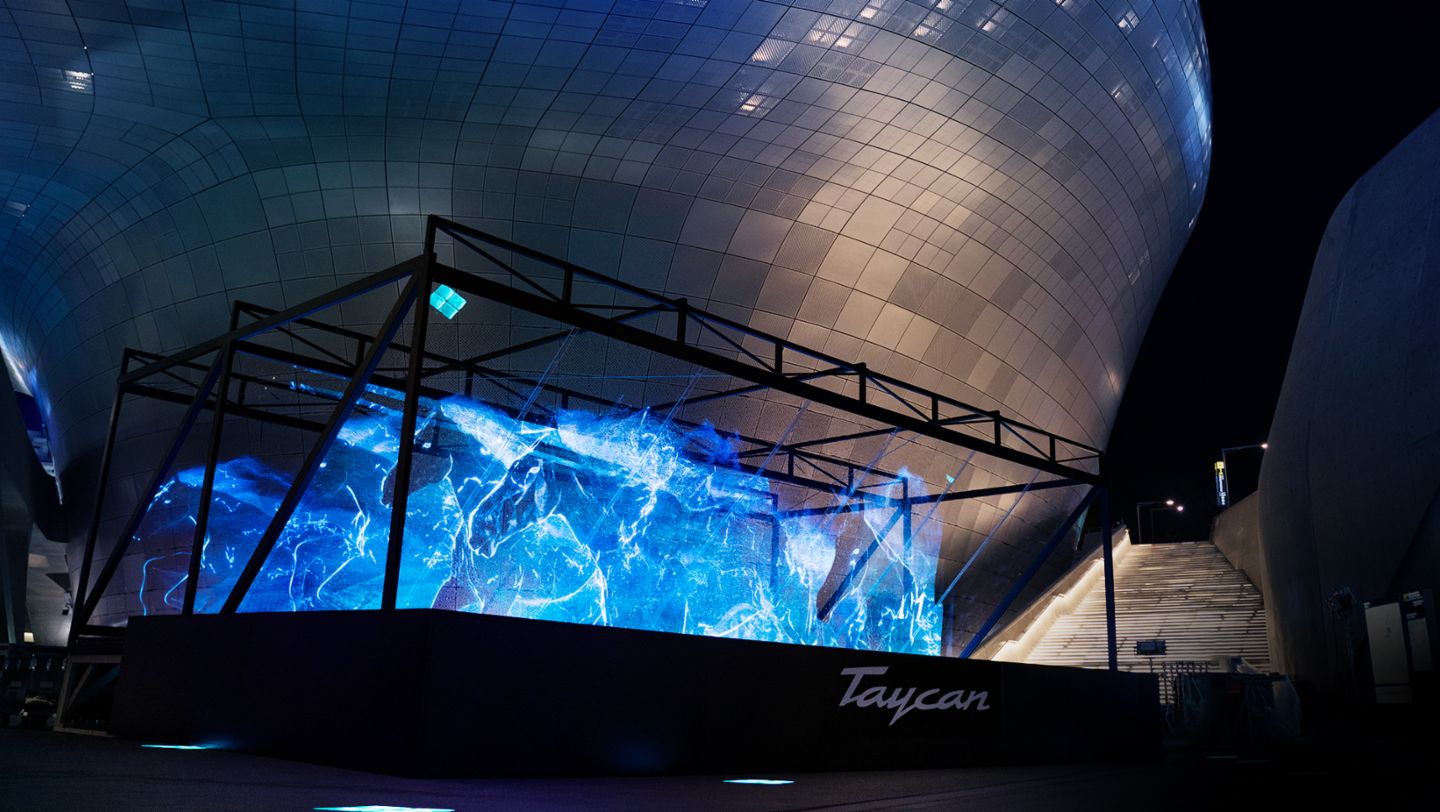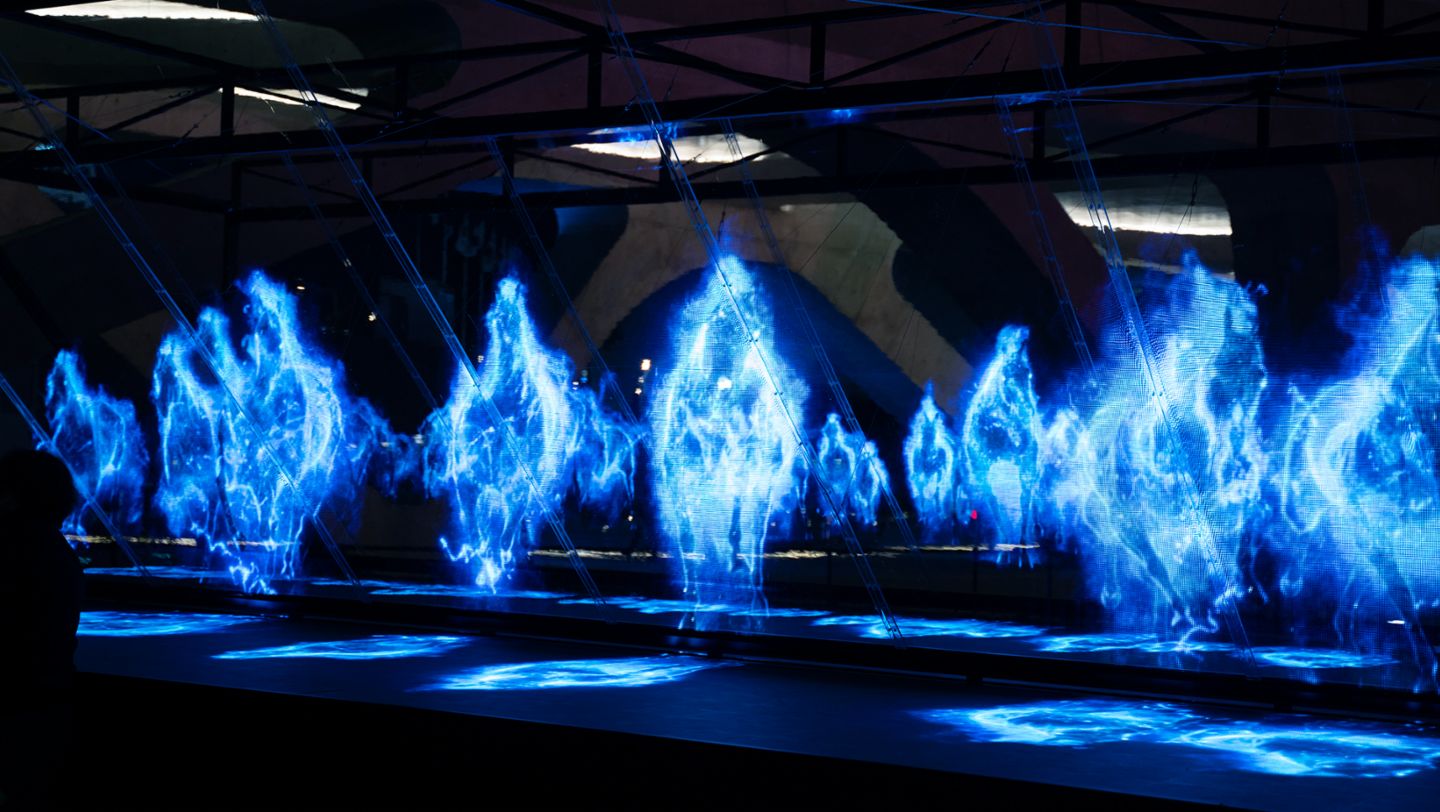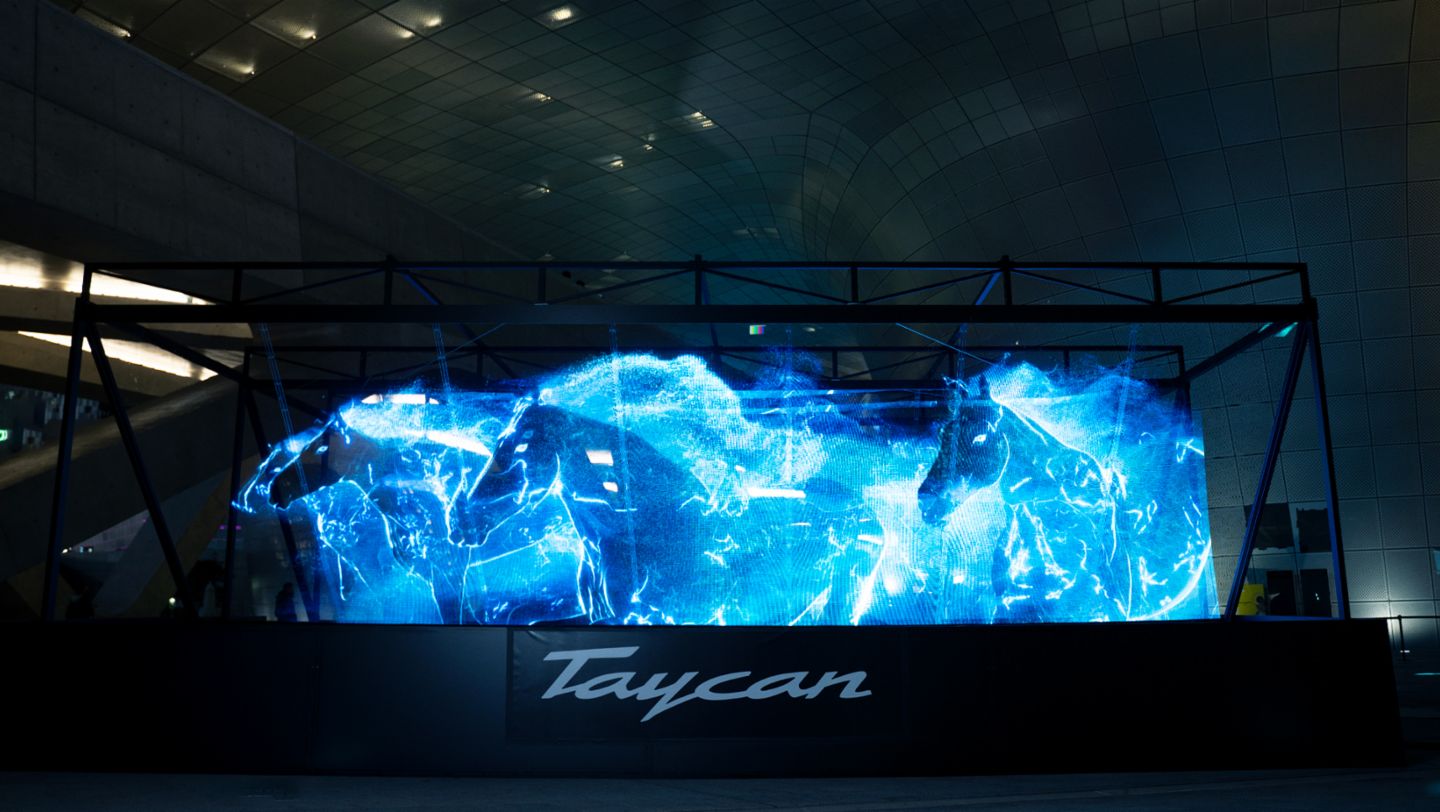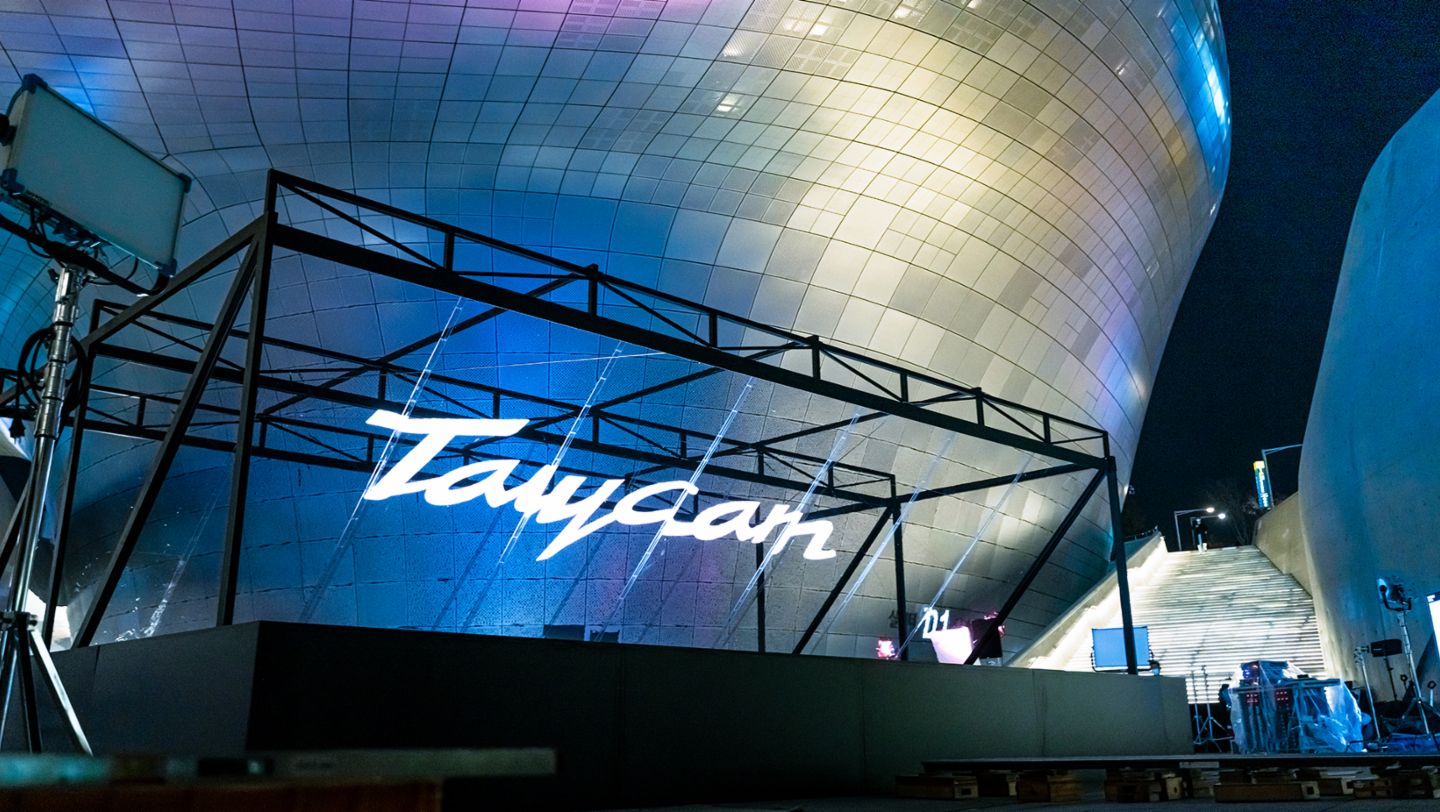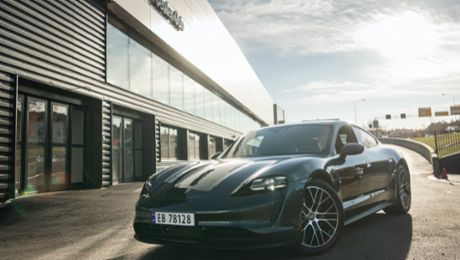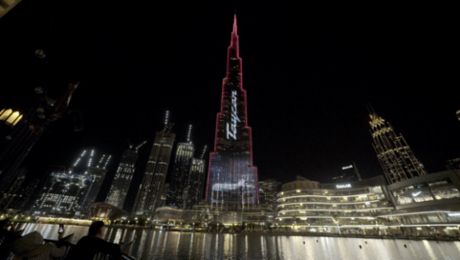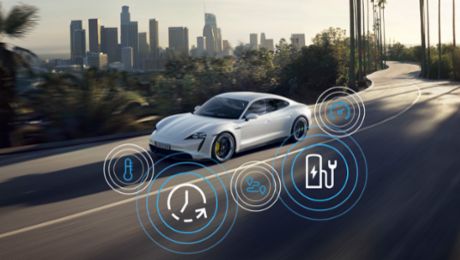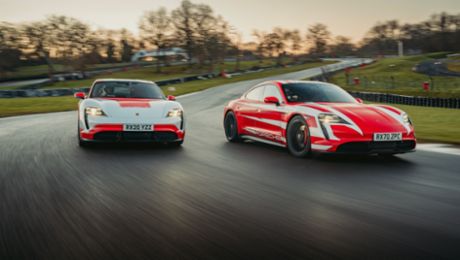The futuristic light show, which was designed by experts in kinetic art to highlight the car’s design credentials and state-of-the-art technology, saw the Taycan 4S take centre stage at the Porsche Taycan Arena in Garosu-gil in Seoul, in front of journalists and VIPs.
In the weeks running up to the launch, a Horse Hologram Project has been running, with members of the public treated to holograms of horses running through the streets in a play on the origin of the name, Taycan – which can be roughly translated to mean “soul of a spirited young horse”.
At the Porsche Taycan Arena, which was designed with a “universe” theme, special performances are taking place until 30 November, with a warp tunnel and sound zones among the highlights. The digital displays aim to emphasise the main features of the Taycan – from its breath-taking performance to its sustainable credentials.
Holger Gerrmann, CEO of Porsche Korea, said: “We are very pleased to introduce the Taycan, the brand's first pure electric sports car that sets the standard for future sports cars and that marks the opening of a new era for Porsche in the Korean market.
“We plan to further strengthen Porsche’s electric sports car portfolio by sequentially introducing the Taycan Turbo S and the Taycan Turbo in 2021, starting with the official launch of the Taycan 4S into the new Porsche electromobility era.”
